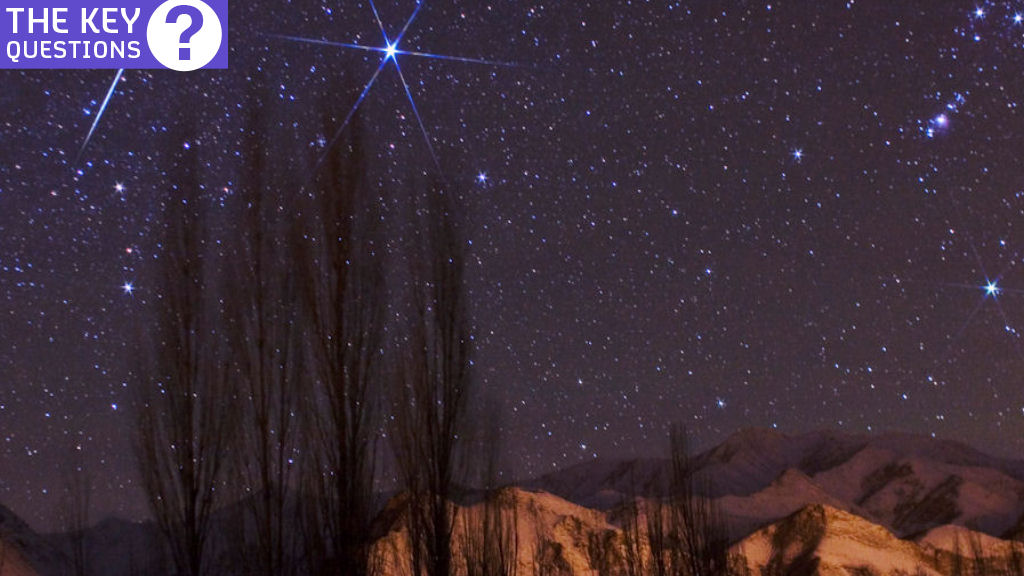What is a meteor? The key questions
A meteor has lit up the skies over Russia and injured hundreds. But what are meteors, how are they caused, and how common are they?

What is a meteor?
“A meteor is often referred to as a shooting star, but they are nothing to do with stars at all,” Brendan Owens of the Royal Observatory Greenwich told Channel 4 News.
“They are little dust grains, very small amounts of material from space, that burn up in the earth’s atmosphere. A meteor shower is what happens when we have a lot of shooting stars at once.”
When do we see them?
“For meteor showers, normally what happens is we have big objects that come in and out of our solar system, called comets. They move in and out, leaving behind a debris trail – a garbage trail – and every year the earth passes through that as we move around the sun. Then the debris causes meteor showers as they burn up.
“Individual objects [meteors, not showers] can also come from the asteroid belt that lies between Mars and Jupiter.
It’s a cosmic coincidence. Brendan Owens, Royal Observatory Greenwich
“Through the year there are a number of opportunities to catch a meteor shower, but if we have a bigger piece of material – something boulder size, or a golf ball – that material can burn even brighter and we call that a fireball, an incredibly bright shooting star.
“If that material makes it to the ground and doesn’t disintegrate, you get a meteorite – one or more – and that’s an object that came from space, when you can pick up a space rock.”
How common are they?
“In terms of things falling from space, tens of thousands of tonnes fall to earth per year. Most of it burns up in the atmosphere, but some will make it through to earth. This is a big event [the Russia meteor] because it is a larger object that has actually been seen from a populated area. Many times objects do fall but often in unpopulated areas – in the ocean, for example.
“For meteor showers, there are a number per year. One of the best ones is the Perseid meteor shower. They are named after the constellations they appear to come from, so Perseid comes from the constellation Perseus.
“In total, there are 10 meteor showers per year – some are pretty poor but some are really good and if you go somewhere dark, you can see 100 or more per hour.”
What has happened in Russia?
“Ordinary meteors come through the atmosphere but they don’t survive. In Russia, this one has – it’s still difficult to say but it appears the object burnt up as a fireball, then some meteorites made it to the surface. Once we find the meteorites, we can work out what the original object was made of – whether it was rocky or metal, and what size it was.
“It seems like there was a sonic boom as well, which would shatter glass – meteors can travel at speeds that break the sound barrier.”
Meteor, meteorite, asteroid or comet?
“Let’s start with things in space first of all, comets and asteroids. Asteroids are made of rock or metal and come from the asteroid belt between Mars and Jupiter. Comets are a bit more like dirty ice snowballs, made mostly of water. They come from further away, the outer edge of the solar system – the Oort cloud and the Kuiper belt.
There’s lots of material out there and it sometimes gets knocked out of the asteroid belt or other areas, and that’s when they come close to us. Comets take a long time to come around – hundreds or thousands of years. For asteroids it’s shorter.
“Meteors are dust grains, bits of asteroids. The size of the chunks can vary – dust grains to the size of a fist or bigger. If material makes it to the ground and doesn’t disintegrate, you get a meteorite.”
Are there famous incidences of meteors coming to earth?
“Yes – one you hear about a lot is the 1908 Tunguska event in Siberia, it’s quite remote. There were people at a distance who felt a shockwave when the object exploded above the surface. It didn’t make landfall but the explosion did flatten trees for about 800 square miles.
“If it had been somewhere populated it might have been more devastating. The Russian meteor is not on the scale of that but it is similar.”
Should I be worried about meteor impacts?
“One thing to remember is that we do have eyes on space all the time. We are monitoring space debris – some of them are too small to detect but there is nothing we have detected so far which is on course for us which can cause city-wide or wider damage.
“If something like the asteroid which has come close to us today hit, that would be able to devastate a city. From initial observations, the meteor is probably not connected to the asteroid, it’s not got the same trajectory and it’s 12 hours ahead. It’s just a cosmic coincidence.
“We have discovered up to 90 per cent of potentially hazardous asteroids – there are still 5-10 per cent in the system that are unaccounted for. We have closed the gap but we still have to watch the skies. This one came under the radar.”




